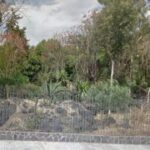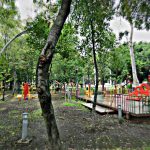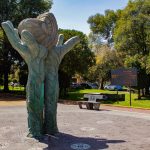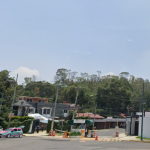Parque Santa Úrsula is an ecological park and green space just west of the Estadio Azteca. The park largely surrounds the grounds of the Shriner’s Children’s Hospital. Nearly entirely walled-in, it’s also a surprisingly natural and secluded area. The park is also named for the Twin-Cities agreement between Coyoacán and Arlington, Virginia in the United States. That agreement was signed in 1996.
Today, the park is home to an aviary and a small farm. In turn, here you’ll find rabbits, ducks, and parakeets as well as some naturally occurring animals. The website, Naturalista.mx, lists no fewer than 65 species of plants and animals spotted within the park.
Here and nearly all of the surrounding neighborhoods date from the late 19th century. At that time, a few big and wealthy haciendas were subdivided. The haciendas had been there since the Spanish began ruling over, and sometimes from, the larger Coyoacán area in the early 16th century.
At some 87,000 square meters, it’s not the City’s biggest park. But the Parque Santa Úrsula fulfills a nice role in being not the most visited. Just off the massive parking lots of the stadium, it’s also welcome relief from the concrete.
The main park entrance is on the Avenida del Iman, just after the hospital. At the other end of the same avenue, before the University City, is the newer and brasher Parque Cantera. For those waiting to get into the stadium, or just seeking some nature in the area, it’s a terrific natural plot and refresher.

Nearest at 0.60 kms.

Nearest at 0.61 kms.

Nearest at 0.64 kms.

A small neighborhood park amidst the long history of Coapa . . .

The biggest of the central gardens for which Ciudad Jardín is named . . .

A historic park and home to one of the city's most important PILARES.

The deep history of one of the best-known landmarks on the Periférico highway.

A garden with a controversial and inviting interior...